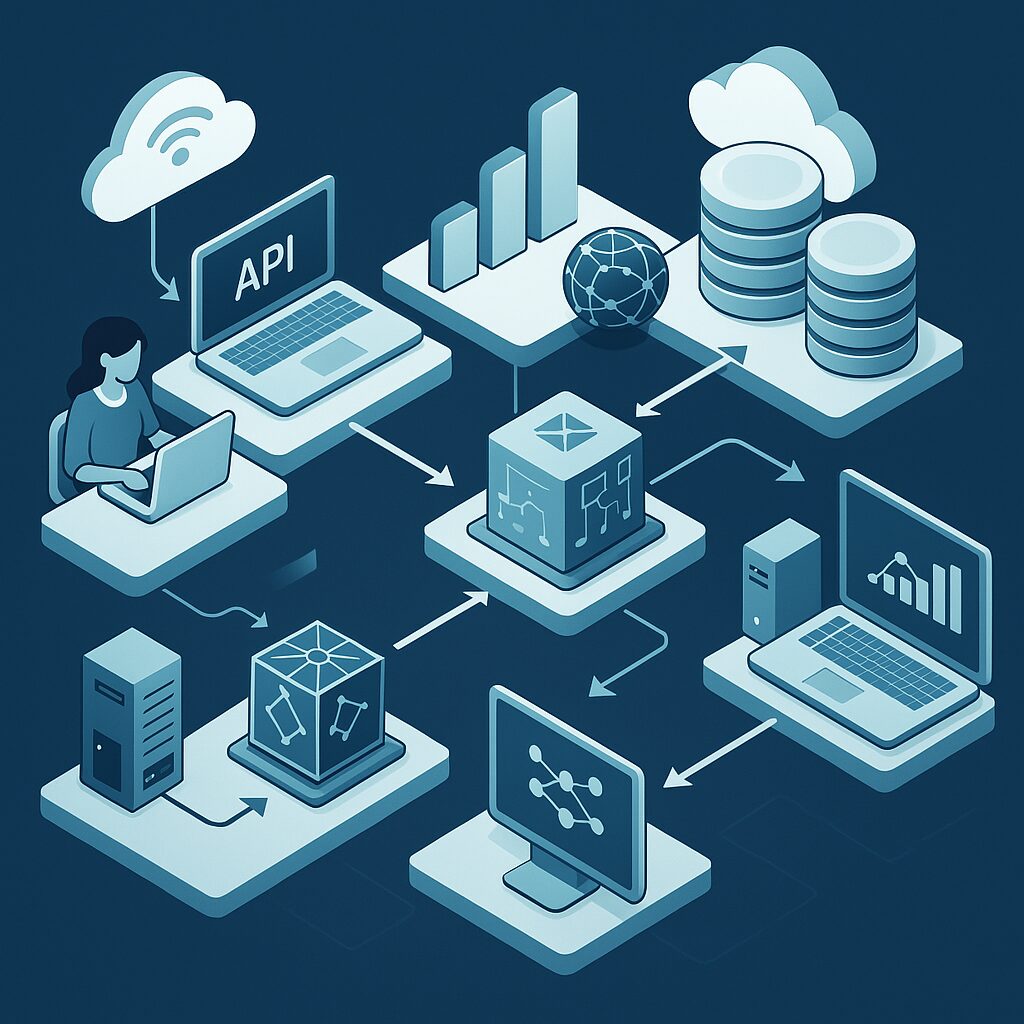Introduction
In machine learning, the sophistication of your model means little without a reliable, well-architected data pipeline. For AI Solutions Managers, understanding the data pipeline is critical—not just for model accuracy, but for long-term system scalability, maintainability, and alignment with business goals. Each stage, from ingestion to monitoring, plays a pivotal role in ensuring that AI solutions are production-ready and future-proof.
Ingestion: Capturing the Right Data at the Right Time
Objective: Ingestion is the entry point where raw data is collected from disparate sources, such as transactional systems, APIs, sensors, or real-time event streams.
Tools:
-
Kafka for event streaming
-
APIs, SQL databases, IoT streams for structured retrieval
Strategic Role: Data ingestion determines the freshness, reliability, and availability of the data fed into downstream systems. It’s the first gate for operationalizing AI.
Use Case: In fraud detection, ingestion pipelines pull real-time transactions from banking APIs, enabling instant risk analysis.
Challenges:
-
Inconsistent data formats
-
Latency issues in real-time use cases
-
Integration with legacy systems
Solutions: Establish schema validation early, use Kafka or managed queues (e.g., AWS Kinesis) for decoupling and reliability.
Preprocessing: Cleaning and Normalizing Raw Data
Objective: This stage ensures the quality of the data through imputation, normalization, deduplication, and transformation.
Tools:
-
Pandas for Pythonic data wrangling
-
Apache Spark for distributed processing
-
DBT or Airflow for data workflow orchestration
Strategic Role: Without rigorous preprocessing, even the most advanced models will underperform. Garbage in, garbage out.
Use Case: In predictive maintenance, preprocessing filters noise from sensor logs and imputes missing values for model readiness.
Challenges:
-
Handling null values and outliers
-
Managing complex data transformation logic
Solutions: Automate preprocessing steps, version your transformations, and use profiling tools to assess data health continuously.
Feature Engineering: Turning Raw Data into Predictive Signals
Objective: Transform cleaned data into features that help models generalize patterns—this is where domain expertise is critical.
Tools:
-
Windowing for time-based features
-
Embedding models for unstructured text
-
Custom domain logic for industry-specific signals
Strategic Role: This is where raw data becomes intelligence. Well-crafted features can outperform fancy algorithms.
Use Case: In churn prediction, features such as “days since last login” or “average ticket resolution time” become strong predictors.
Challenges:
-
Overengineering irrelevant features
-
Feature leakage across training/test sets
Solutions: Apply cross-validation rigorously and document feature lineage to support reproducibility and audits.
Storage: Efficient and Scalable Data Retention
Objective: Store data and features in formats optimized for retrieval, scalability, and cost.
Tools:
-
Parquet or Delta Lake for columnar storage
-
SQL or NoSQL (e.g., MongoDB) depending on data access patterns
Strategic Role: The right storage solution balances speed and cost. It also supports experimentation, versioning, and traceability.
Use Case: A telecom company storing 5 years of customer usage logs in Parquet enables historical pattern mining for LTV modeling.
Challenges:
-
Choosing between batch vs real-time access
-
Storage bloat and schema drift
Solutions: Partition your data, enforce versioning, and leverage cloud-native lifecycle management.
Modeling: Training, Evaluating, and Iterating
Objective: Use cleaned and feature-engineered data to train ML models that solve business problems.
Tools:
-
scikit-learn for quick prototyping
-
XGBoost for structured data
-
PyTorch or TensorFlow for deep learning
Strategic Role: Modeling is where statistical theory meets business value—but only if you frame the right problem with the right evaluation metrics.
Use Case: An insurance firm uses XGBoost to model claims fraud based on hundreds of structured inputs.
Challenges:
-
Overfitting and poor generalization
-
Model reproducibility and auditability
Solutions: Use pipelines, perform rigorous hyperparameter tuning, and track experiments using tools like MLflow.
Serving: Operationalizing ML Models for Production
Objective: Make models available for real-time or batch inference by wrapping them as APIs or deploying to edge/cloud environments.
Tools:
-
FastAPI, Flask, or ONNX for API endpoints
-
MLflow, Docker for containerization and deployment
Strategic Role: This is the business touchpoint—where insights become action. Poor serving delays time to value.
Use Case: An e-commerce site uses FastAPI to score customer behavior in real time and personalize offers.
Challenges:
-
Latency, scaling, and compatibility with downstream systems
-
Secure deployment and version rollback
Solutions: Use A/B testing for live rollouts, load balancers for scaling, and containers for environment consistency.
Monitoring: Ensuring Performance Over Time
Objective: Track model performance, data drift, latency, uptime, and failures.
Tools:
-
Prometheus and Grafana for monitoring infrastructure metrics
-
Custom dashboards for tracking accuracy, drift, and usage
Strategic Role: Without monitoring, models silently decay, leading to bad business decisions.
Use Case: In credit risk scoring, model drift is tracked weekly to detect if economic shifts affect prediction accuracy.
Challenges:
-
Lack of alerts for degradation
-
Inadequate visibility into black-box models
Solutions: Implement automated retraining triggers and build explainability dashboards for stakeholder trust.
Conclusion
A scalable, reliable AI data pipeline is not just technical infrastructure—it’s the foundation of every successful machine learning deployment. For AI Solutions Managers, mastering each pipeline stage ensures models are performant, maintainable, and aligned with business KPIs. Now is the time to audit your ML pipeline architecture—identify bottlenecks, modernize tooling, and strengthen end-to-end visibility.

